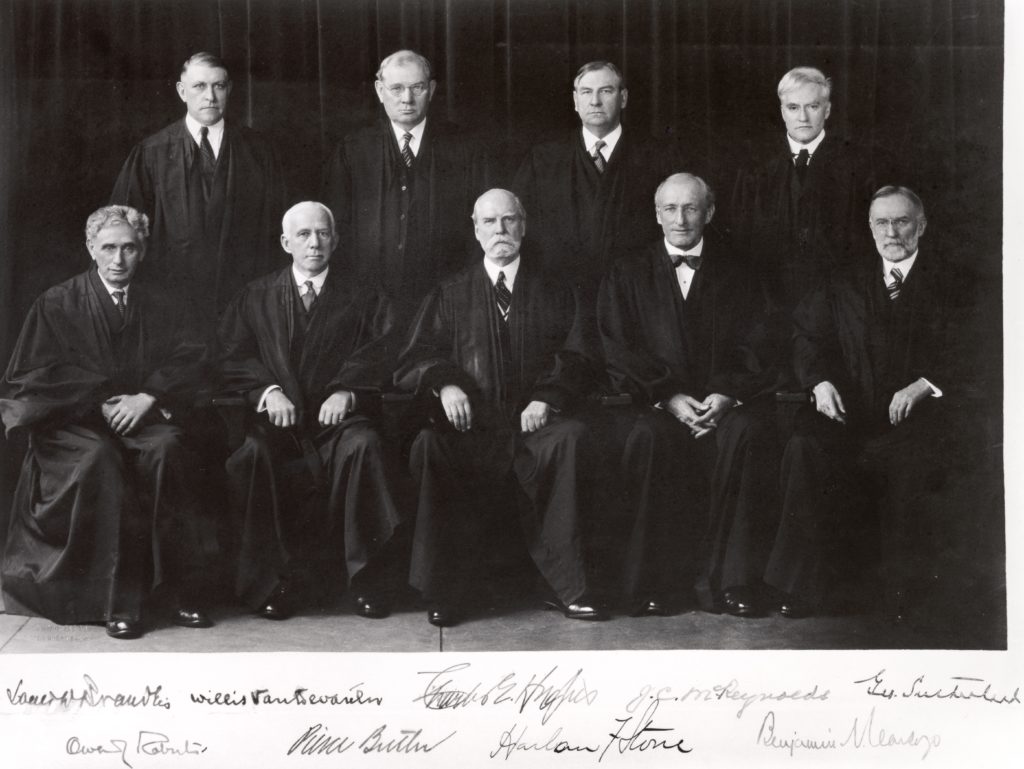
The National Labor Relations Board

The Hughes Court (1932-1937). Seated, from left to right: Justices Louis D. Brandeis and Willis Van Devanter, Chief Justice Evans Hughes, and Justices James C. McReynolds and George Sutherland. Standing, from left to right: Justices Owen J. Roberts, Pierce Butler, Harlan Fiske Stone, and Benjamin N. Cardozo.

In 1935, President Roosevelt signed into law the National Labor Relations Act.

Political Cartoon: "New Deal Lexicon: TVA, WPA, PWA, AAA"

The Jones & Laughlin Steel Corp.

Chief Justice Hughes acknowledged that the federal government could not regulate “all labor relations, but only what may be deemed to burden or obstruct that commerce.”

Chief Justice Hughes wrote that Congress may regulate local activity that has “such a close and substantial relation to interstate commerce that their control is essential or appropriate to protect that commerce from burdens and obstructions.”

The "scope of the power to reach intrastate activity “must be considered in the light of our dual system of government, and may not be extended so as to embrace effects upon interstate commerce so indirect and remote that to embrace them, in view of our complex society, would effectually obliterate the distinction between what is national and what is local and create a completely centralized government. The question is necessarily one of degree.”

Implied powers during the New Deal
In 1935, President Roosevelt signed into law the National Labor Relations Act (NLRA). This statute gave the National Labor Relations Board (NLRB) the power to punish “unfair labor practices affecting commerce.”
The Jones & Laughlin Steel Corporation argued that the NLRA was “an attempt to regulate all industry, thus invading the reserved powers of the States over their local concerns.” On this question, the Court split 5-4. Chief Justice Hughes wrote the majority opinion. He acknowledged that the federal government could not regulate “all labor relations, but only what may be deemed to burden or obstruct that commerce.” This test allowed Congress to protect interstate commerce from “burdens and obstructions.”